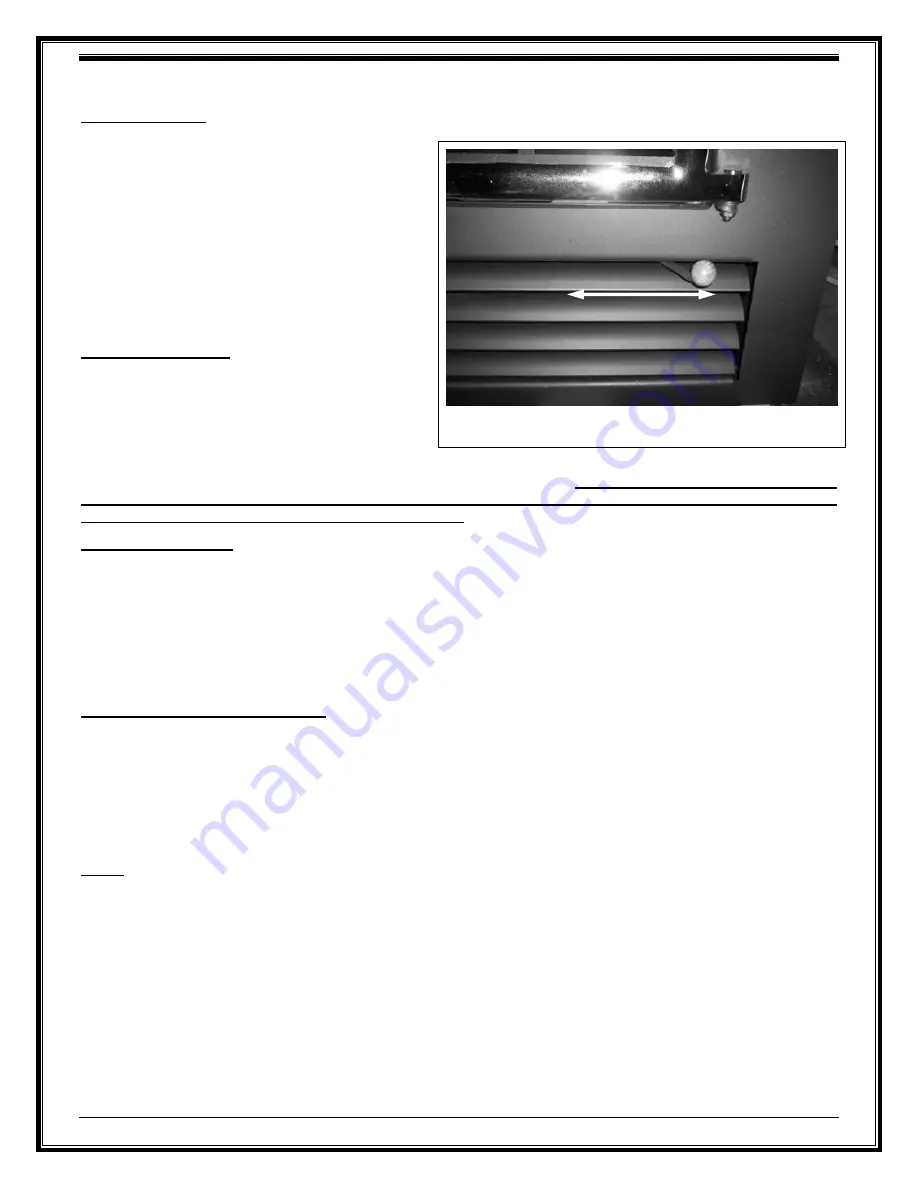
OPEL2 Owner's Manual
7
RSF Woodburning Fireplaces
OPERATION
AIR CONTROLS
Unlike most open fireplaces, RSF fireplaces don’t
have flue dampers. Instead, the system is sealed
by closing the door, and the amount of air entering
the firebox is controlled by the combustion air
control lever on the front of the fireplace on the
right below the door (see Figure 2) which can be
moved left or right. Setting the air control lever all
the way open (towards the right) will allow the
maximum amount of air into the firebox. Closing the
air control (towards the left) will reduce the amount
of air entering the firebox.
Bi-metallic Damper
The bi-metallic damper is a unique feature built into
your OPEL2 fireplace. As the fireplace heats up it
will activate the bi-metallic damper. This will
automatically begin to shut down the air entering
the firebox, slowing the combustion process. This
will save you wood in the long run, and prevent the
fireplace from overheating and causing potential damage to the firebox.
We suggest that the combustion air
control lever is used as the primary control to limit the oxygen entering the firebox, and that the bi-
metallic damper is left as an additional safety system.
Outside Air Control
The OPEL2 has been designed to offer you the choice to use outside air or inside air for combustion. You will find
a sliding door behind the bottom louver and below the firebox. Push the sliding door towards the back to select
outside air or pull it toward the front to select inside air as the combustion air. Because outside air is generally
colder and denser it will help to start the fire. In some cases this fresh air will also help compensate for negative
pressure problems within the house; however it will not prevent the fireplace from smoking in a severely
depressurized house. If the fireplace is installed in a mobile home, the outside air has to be used as combustion
air.
BURN TIME VS. HEAT OUTPUT
The faster your fireplace burns the more heat it will create; however, faster fires result in much more hot air flow
up the chimney which means you are sacrificing efficiency. Fast burning fires (lots of air) go through much more
wood than slow burning fires. To get the most out of your OPEL2 fireplace, adequately adjust the combustion air
control lever at the appropriate time. If the fire seems to be burning too quickly, turn the air down. If the fire is
smoldering and there are no visible flames, turn the air up. This way you’ll always be getting the most out of your
fuel.
FUEL
All modern high efficiency fireplaces and woodstoves are designed to burn best with seasoned cordwood.
Seasoned wood can be defined as wood that has been cut, split and let dry under cover for a minimum of 6
months, preferably a year or more. Dry seasoned wood generally contains less than 20% moisture content.
Attempting to burn fuel with a high moisture content will be difficult and result in lower efficiency, increased
creosote buildup and dark deposits on the glass. It’s possible to burn a very large amount of wood, and get very
little heat if the wood is wet.
The type of wood you select is also important. All types of wood give off more or less the same number of BTU’s
per pound. Since softer woods are less dense than hardwoods it is possible to put more weight of hardwood in
the firebox; in other words all woodburning appliances will burn longer and more evenly with hardwoods. Never
burn scrap, garbage, treated wood or driftwood as they produce much more pollution and can corrode the firebox
and chimney as well. Burning large amounts of paper, cardboard, mill ends or construction waste can easily over
fire and damage the fireplace or even ignite a chimney fire if the flue is dirty.
Figure 2 Air Control
Towards the
left to
CLOSE
Towards the
right to
OPEN








































